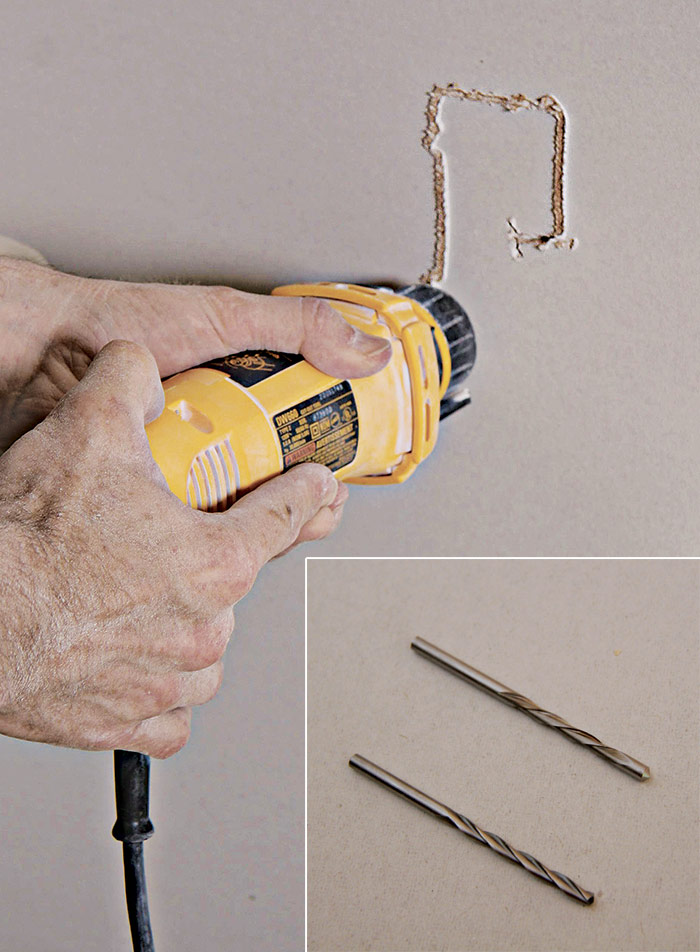Drywall Cutting Tools
A utility knife, a drywall saw, and (sometimes) a router are all you need to make the cuts.
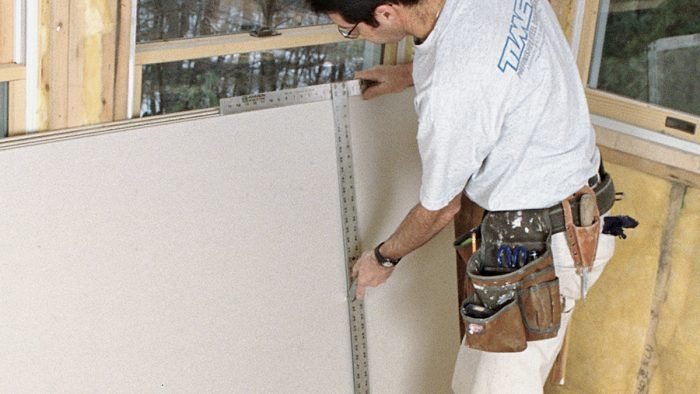
It’s not often that you hang a piece of drywall without having to make some sort of cut. You may need to cut the panel to length or width or make an opening for an electrical outlet box, a window, or a door. On some panels, you may have to make more than one cut. The tools described in this section will help you make clean, accurate cuts in any type of drywall.
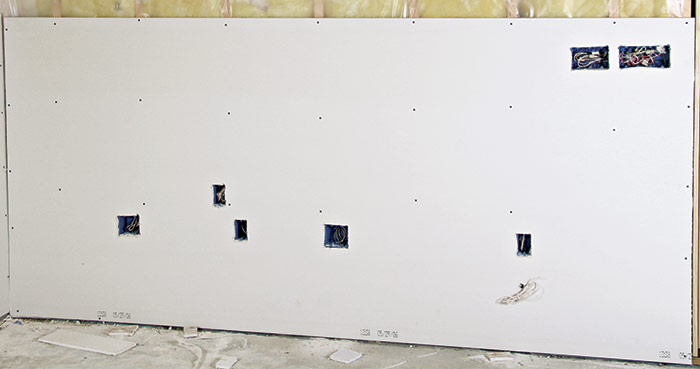
The most commonly used cutting tool is a utility knife. It is typically used in combination with a 4-ft. square to make cuts across the full width of a panel, though it can be used to cut along the mark left by a chalkline.
To cut a panel using a utility knife, follow these steps:
- Mark the length of the panel, and then cut through the face paper and into the gypsum core.
- Snap the panel away from the cut line and make a second cut along the crease on the back of the panel.
- Snap the panel forward again, so that the two pieces separate cleanly.

The sharper the knife blade and the more consistent the depth of the cut, the smoother the cut edge will be. If the knife is sharp, one stroke on each side of the panel will be sufficient. A dull blade will create a jagged cut that may leave the panel a little longer than measured. The jagged edge can be trimmed off with a utility knife, or for a better job, smoothed out with a drywall rasp. I use a utility knife that has a serrated section built into the handle. After making the cut, I use the rough area as a drywall rasp.
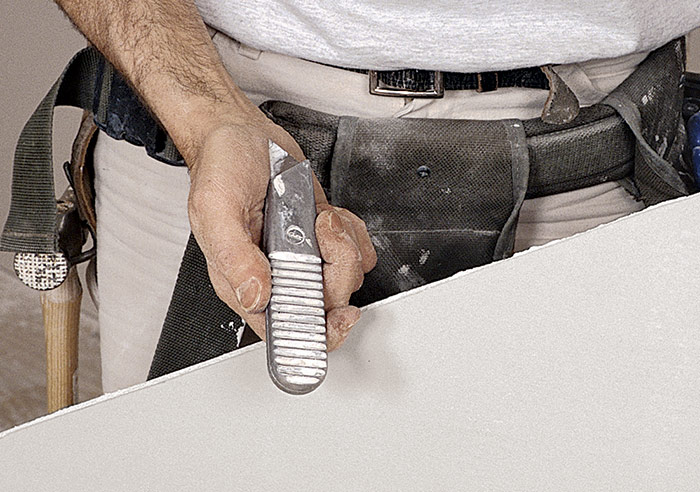
One type of scribing square lets you score the drywall as you measure. The long edge of the tool has small slots that hold the blade of the knife in place as you slide the top of the square along the edge of the panel.
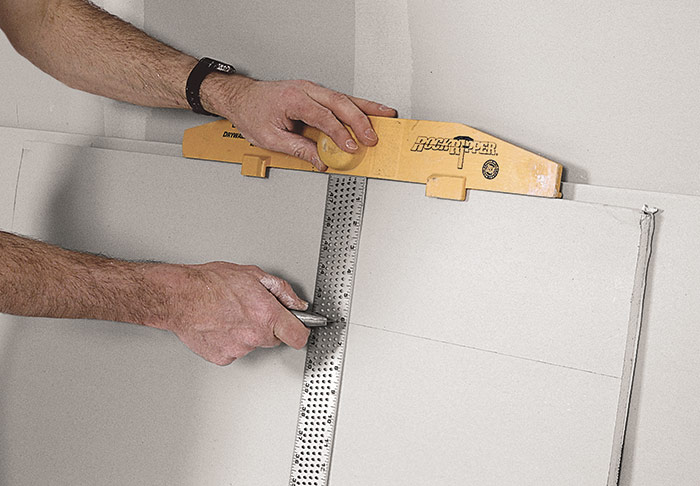
Saws
Customers are sometimes surprised to see me using a saw to cut drywall, but in certain instances it’s faster and easier to use than a utility knife. The teeth in drywall saws have more “set” in them than standard woodcutting handsaws. (The set is determined by the amount the teeth are bent out in each direction; the wider the set, the wider the kerf taken out with the saw.) The wide-set teeth rip through the paper and gypsum core quite easily, and the wide kerf also helps prevent damage to the paper surface when the blade is drawn back.
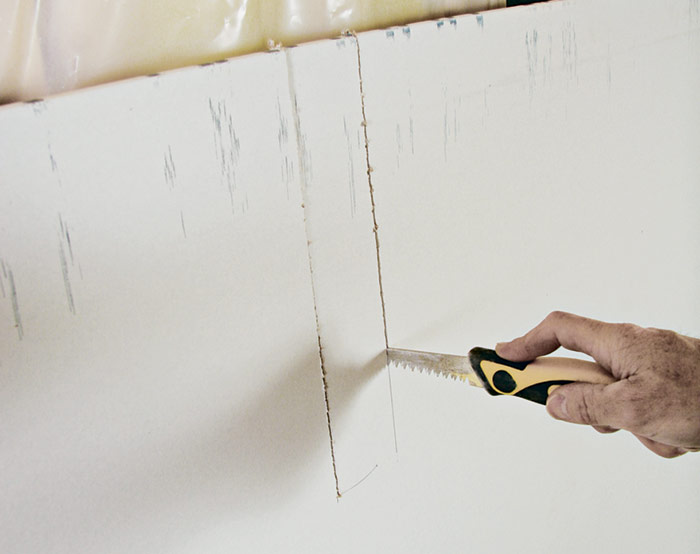
There are two types of saws for cutting drywall. I use a smaller drywall utility saw to cut openings for electrical outlets, pipes, and ducts and to cut square pieces out of panels. This saw has a sharp pointed end, making it easy to start a cut in the center of a panel. I use a larger drywall saw, which is stiffer than an ordinary woodcutting saw, to cut along a door or window opening after the drywall has been hung over the opening and tacked in place. (Make this cut only if the door or window jambs have not been installed; otherwise, you’ll damage the jambs.)
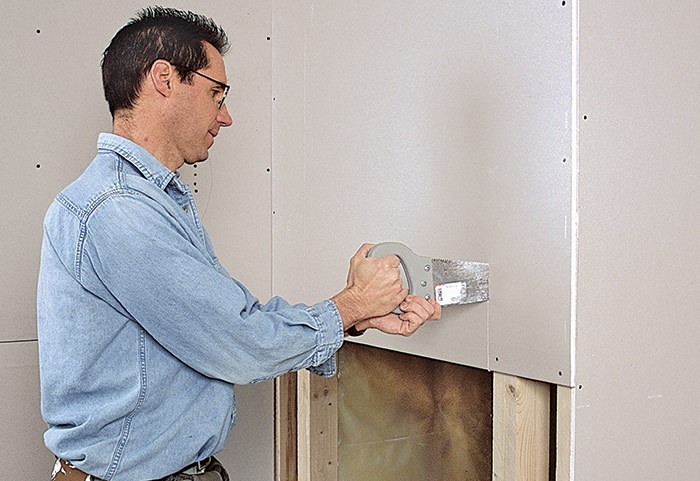
The larger drywall saw also works well for trimming panels that run a little long at the outside corners or at the edge of a doorway. Another use for this rigid saw is to make beveled cuts, which are sometimes necessary for a good fit at corners that are greater than 90 degrees. The saw is a little faster to use than a utility knife.
Drywall router
A drywall router is a specialized tool that’s great for cutting out small openings in drywall panels. A specially designed router bit cuts through the drywall as it follows along the edge of an electrical box or a heat-duct opening. Cutting openings with a router requires less accurate measurements than does cutting with a saw, because you need to find only one edge and follow it around. A drywall router is a powerful tool—be careful not to apply too much pressure or you risk cutting into the electrical box or framing.
